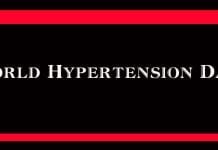 INVC NEWS
INVC NEWS
Chandigarh,
With expanding population, growing urbanization and increasing purchase power, the demand for milk and milk products is expected to go up. We need to catch up with the daunting challenge to produce more milk and convert it efficiently into value added products. In this context, Confederation of Indian Industry (CII) organised a conference on ‘Emerging trends in bovine and non-bovine dairy sector’ at its Northern region headquarters, here yesterday.
Dr Ravinder Malik, Joint Director Research, National Dairy Development Institute (NDRI), said, “In a span of past 65 years, the dairy sector has come a long way registering more than eight-fold increase in milk production, from 17 million tons in 1950-51 to 146.3 million tons at present. In its journey to the top position in the world in terms of milk production, the sector has witnessed several structural changes in production, processing and consumption that have been conditioned by the changing socio-economic environment in the country.”
In emerging markets such as India, significant volume of growth is expected and a shift towards functional dairy foods and added value products is predicted. The dairy industry thus is in an excellent position to develop and exploit the functional food market. The milk from non-bovine species with its new scientific findings and functional characteristics is coming to the fore as healthy drink.
“Nowadays, milk from non-bovine species is recognized for its therapeutic value and nutritive richness. Milk from some of these animals such as goat, sheep and camel is known to contain bio-active components including bio-active peptides, growth factors, therapeutic proteins etc. These have been reported to possess vital medicinal properties such as anticancer, anti-diabetic, antiviral etc. The only issue is to make them economically viable for the common man. It is important to investigate the composition of milk of minor species not only for their basic constituents but also for vital health components as well,” he added.
B K Anand, Director and Business Unit Head- India and Bangladesh Cargill India, said, “World’s population will be touching 9 billion by 2050 and would need about 50-70% more food. India population will reach 1.4 billion coupled with rise in incomes our food demand will also grow. Therefore, we need to increase productivity with the help of science and technology. Milk production also needs to go up and way forward has to be more ‘responsible production’ which manifests sustainability. Modernization of domestic supply chain is essential to tackle quality-related challenges. 100% of Food produced, including milk should be available for consumption and wastages be avoided with robust supply chain. It will reduce burden on natural resources and help future food and nutritional security ”
Inderjit Singh, Director, Punjab Dairy Development Board, said, “By 2050, to meet the domestic demand for milk and carve out a visible place for itself in the world dairy markets, India will have to register more than three-fold increase in milk production crossing 400 million tons. Highly unorganized structure of Indian dairy sector is one of the biggest challenges and our efforts need to focus towards its transformation into an organized sector. It can be possible only by developing skills of the stakeholders, creating awareness regarding the scientific or technological developments, transfer of technologies to end-users and by providing assistance in validation of developed technologies through developing linkages among institutions, industry, entrepreneurs and farmers.”
Rajesh Srivastava, Chairman Regional Committee on Food and Agriculture, CII NR & Chairman and MD Rabo Equity Advisors Pvt Ltd, said, “Sixty-four per cent of the milk produced in India is in trade. Diverting milk from the unorganized sector, which constitutes 73% of the traded commodity, into the organized sector is a major challenge of the dairy processing industry. Another major issue is the poor quality of milk that arrives at the processing dock, coupled with the large scale of adulteration. From an industry perspective, educating farmers regarding the harmful effects of spurious additives, health and hygiene of animals, precautions to be exercised in the use of veterinary drugs and medicines and the significance of high levels of antibiotics and their residues in milk would be advantageous.”
















